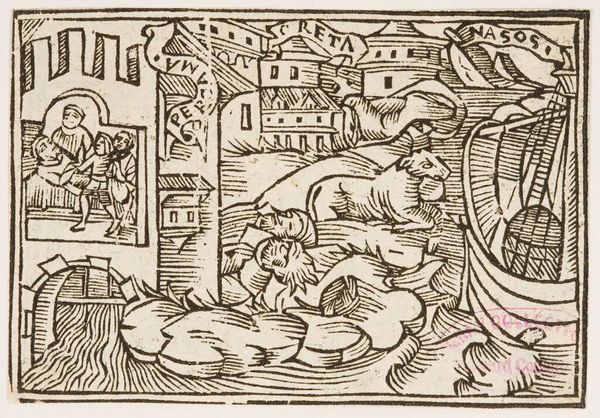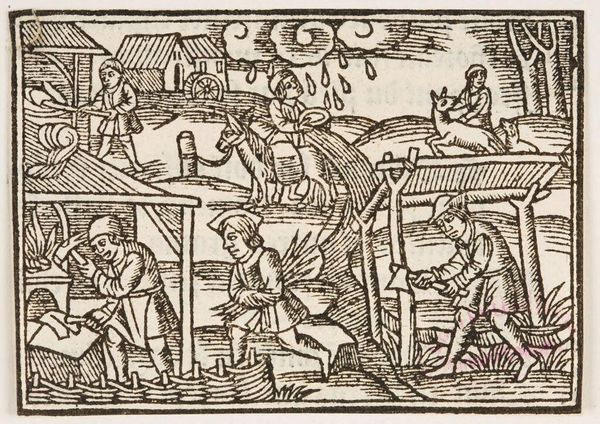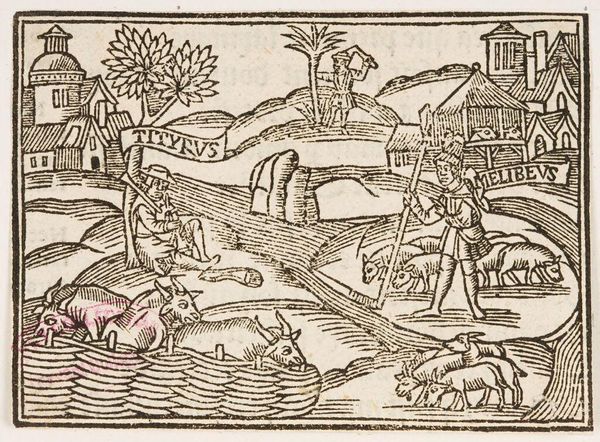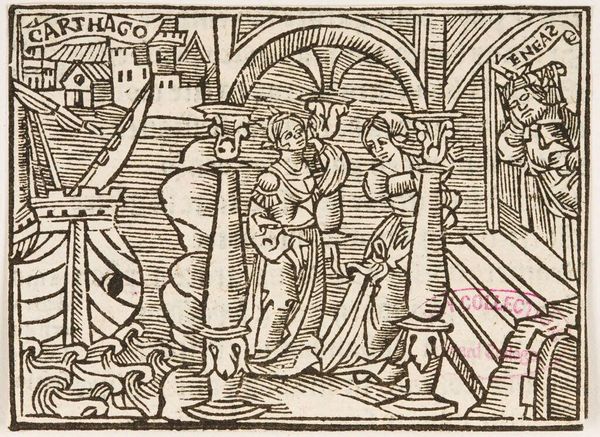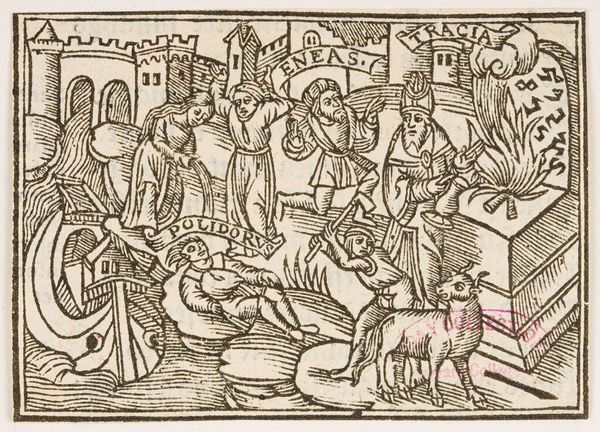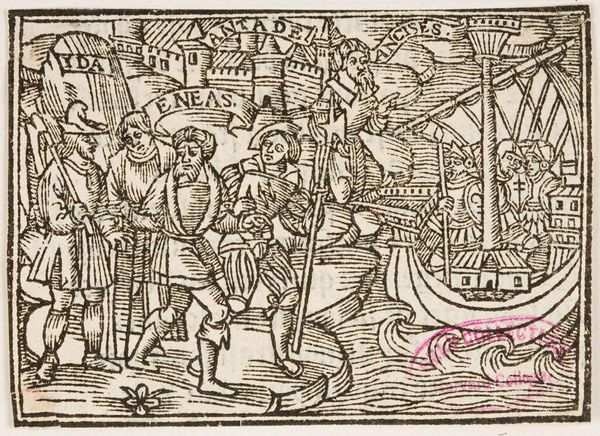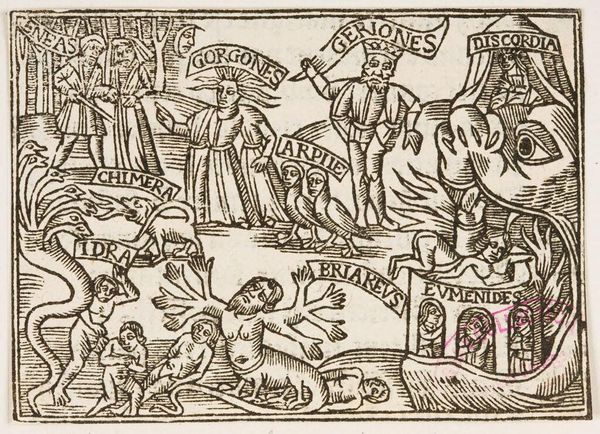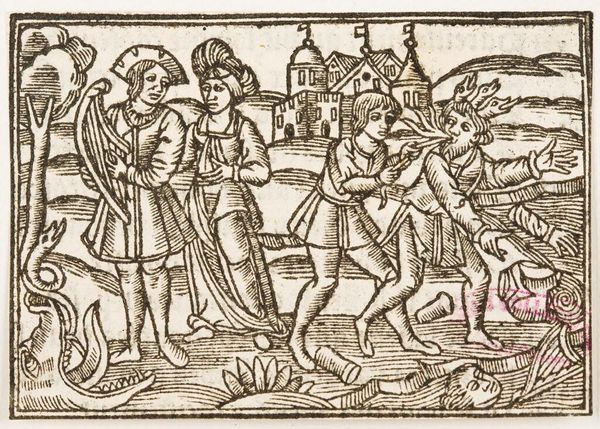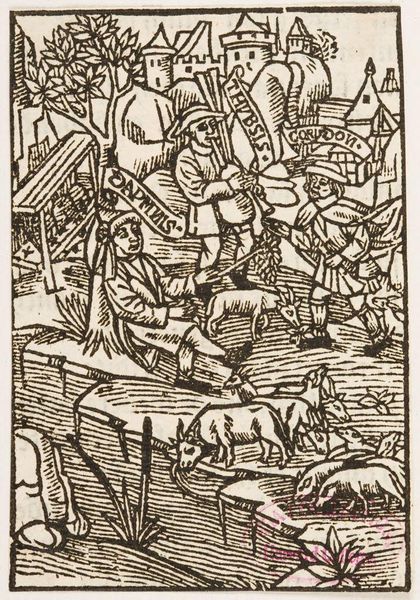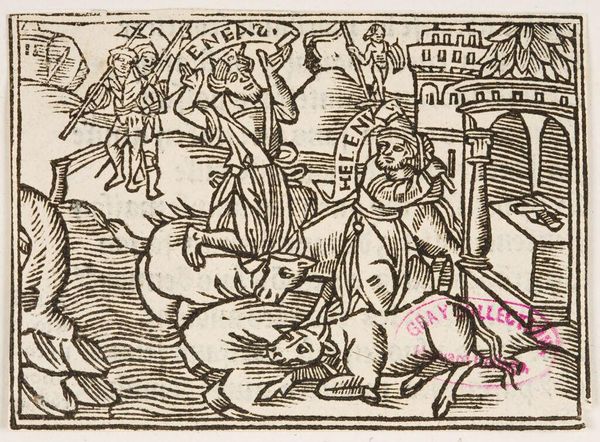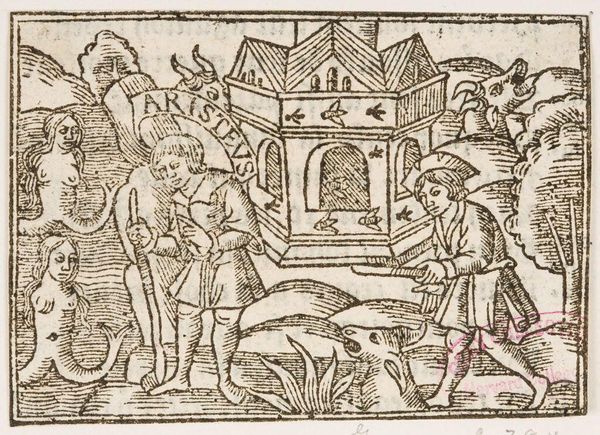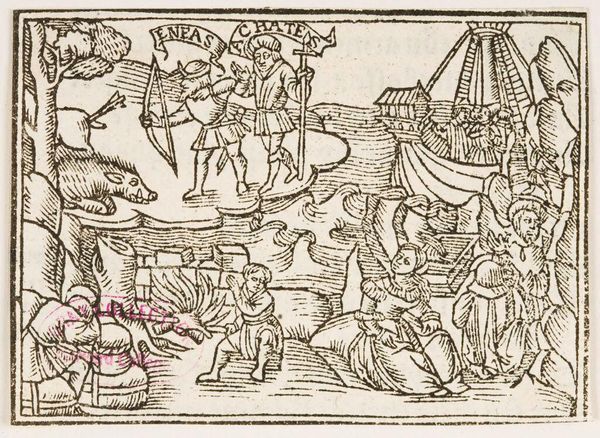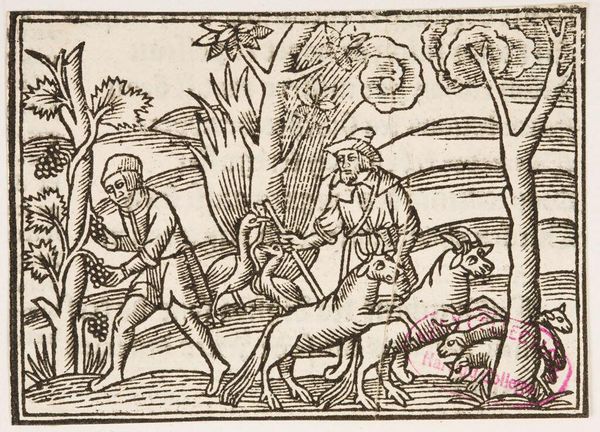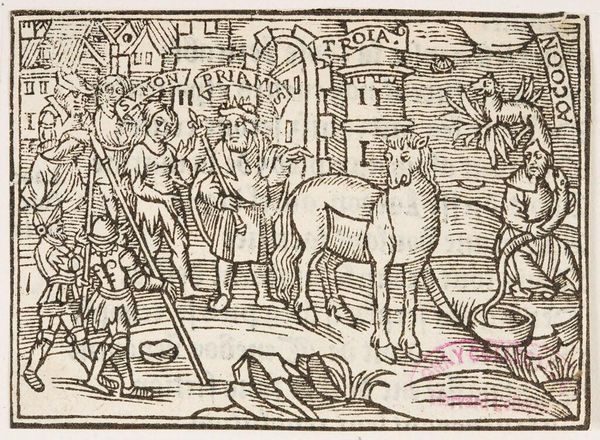
Copyright: CC0 1.0
Editor: This is Illustration LXIII, by an anonymous artist. It's a captivating woodcut print. I'm struck by how it blends classical figures with, what looks like, medieval cityscapes. What do you make of the way this imagery is put together? Curator: It's fascinating, isn't it? These prints often served as visual shorthand for complex narratives, shaping public understanding of history and mythology. Notice how the figures—Juno, Helen, Aeneas, Venus, Neptune—are labelled. How might these labels guide a viewer’s interpretation? Editor: They provide immediate context, almost like captions. Were these images meant to educate or entertain? Curator: A bit of both, I think. They democratized access to classical stories but also reinforced certain societal values. Consider the role of female figures like Juno and Venus. Are they presented as powerful or simply as objects of desire? Editor: Interesting, the composition does seem to position them within a male-dominated narrative. Thank you, that gives me a lot to consider. Curator: My pleasure. It is a good example of how art can reflect and shape cultural attitudes.
Comments
No comments
Be the first to comment and join the conversation on the ultimate creative platform.
